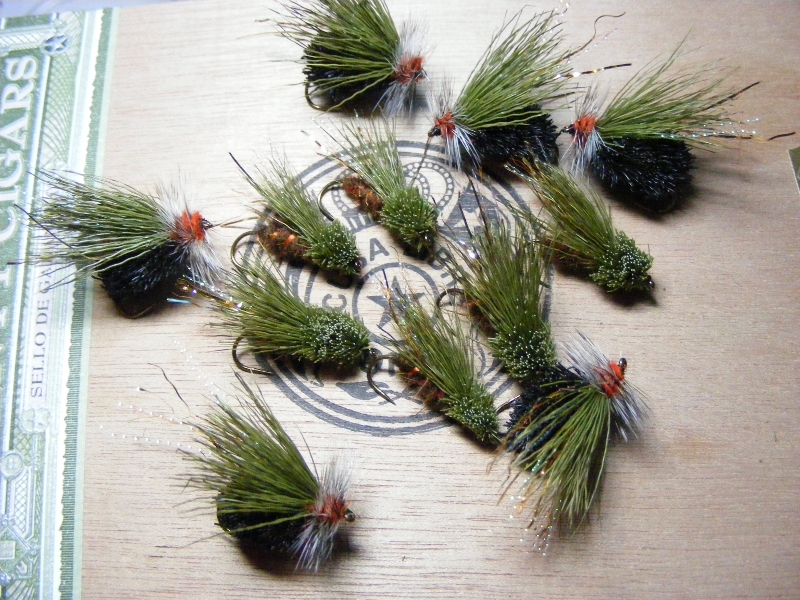FrequentTyer
Member
- Joined
- Dec 17, 2009
- Messages
- 927
I finally had some time to play with a few cicada patterns today. I started out with a variation on the C-13 cicada from this video. It is basically a suped up Letort hopper and I played a bit with the materials and colors until I found a combination I liked. The underside picture is intended to show how the wing material gives an impression of the clear veined wing from below,
C-13 Cicada Variation
Hook: Dry Fly #8
Thread: Black UNI 6/0
Rib: Orange floss
Abdomen: Dubbing mix (black and burnt orange rabbit, olive hare’s ear, dark olive angora goat (and that is why I use a coffee grinder )
)
Underwing: Pearl krystal flash and Gold northern lights
Wing: Olive deer hair
Thorax/Head: Spun olive deer hair

It has been a while since I have done any deer hair work, and even on a good day I'm no Hans Weilenmann. Regardless, I wanted something a bit chunkier, so I decide to play around with pattern from yet another Hans seen in this video.
Han’s Cicada Variation
Hook: Dry Fly #8
Thread: Black UNI 6/0
Abdomen: Spun black deer hair
Underwing: Pearl krystal flash and Gold northern lights
Wing: Olive deer hair
Thorax/Head: Rust orange rabbit dubbing
Hackle: Grizzly undersized

I hope I get a chance to try them out. If they don't work, I have another 17 years to work on the patterns.

And in the meantime I think the bluegills will appreciate them.
Mike.
C-13 Cicada Variation
Hook: Dry Fly #8
Thread: Black UNI 6/0
Rib: Orange floss
Abdomen: Dubbing mix (black and burnt orange rabbit, olive hare’s ear, dark olive angora goat (and that is why I use a coffee grinder
Underwing: Pearl krystal flash and Gold northern lights
Wing: Olive deer hair
Thorax/Head: Spun olive deer hair
It has been a while since I have done any deer hair work, and even on a good day I'm no Hans Weilenmann. Regardless, I wanted something a bit chunkier, so I decide to play around with pattern from yet another Hans seen in this video.
Han’s Cicada Variation
Hook: Dry Fly #8
Thread: Black UNI 6/0
Abdomen: Spun black deer hair
Underwing: Pearl krystal flash and Gold northern lights
Wing: Olive deer hair
Thorax/Head: Rust orange rabbit dubbing
Hackle: Grizzly undersized
I hope I get a chance to try them out. If they don't work, I have another 17 years to work on the patterns.
And in the meantime I think the bluegills will appreciate them.
Mike.





